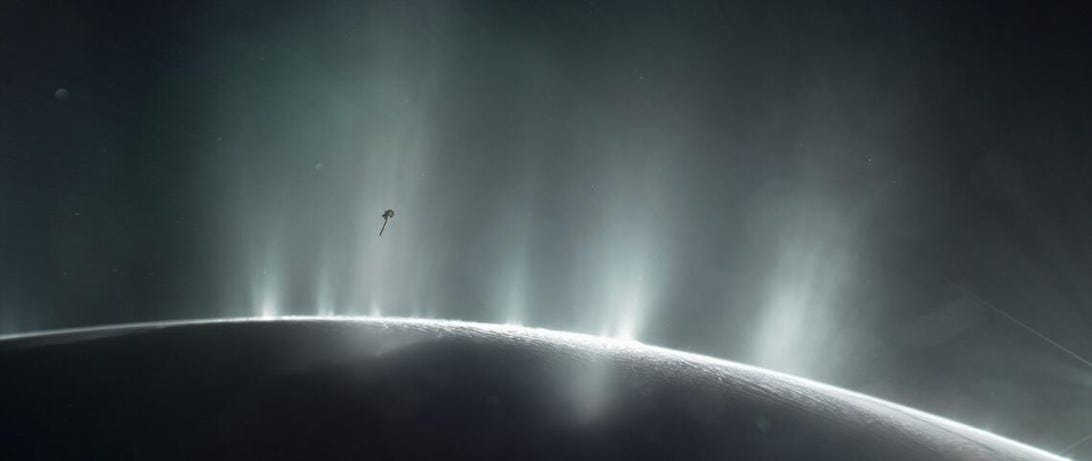
An artist's illustration shows Cassini flying through a plume from Saturn's moon Enceladus.
NASAWhile we're busy digging around in the dry dust of Mars and the atmosphere of Venus looking for signs of microbes, Saturnian moon Enceladus is sending out plumes that shout, "Hey, humans, I might be a great spot for life!" Microbes could be a possible reason for intriguing methane readings from the moon, a new study suggests.
NASA's dearly departed Cassini spacecraft collected data on the chemical composition of water plumes that erupt from Enceladus. It found a surprisingly high amount of methane, a gas often associated with life here on Earth.
Cassini also logged a relatively high concentration of molecules of dihydrogen and carbon dioxide along with the methane. "We wanted to know: Could Earthlike microbes that 'eat' the dihydrogen and produce methane explain the surprisingly large amount of methane detected by Cassini?" University of Arizona biologist Regis Ferriere said in a statement Tuesday. Ferriere is co-author of a study on the the moon's plumes published in the journal Nature Astronomy.
Previous studies have shown Enceladus has the ingredients to support life. It has a subsurface ocean with a source of warmth. Scientists see possible parallels between the Enceladus plumes and hydrothermal vents on Earth's ocean floor.
Ferriere and colleagues used mathematical models to determine what processes might explain the Cassini methane data. "They conclude that Cassini's data are consistent either with microbial hydrothermal vent activity, or with processes that don't involve life forms but are different from the ones known to occur on Earth," the university said.
See Saturn's secrets through NASA Cassini's finest views
See all photosThe researchers aren't saying life exists on Enceladus, but they are saying microbes are one possible explanation for the data. Further study will be required to determine if our long-sought search for life beyond Earth could find success on the Saturnian moon.
Enceladus isn't the only place in the solar system with a methane mystery. NASA is working on why its Curiosity rover detects methane near the ground on Mars while an orbiting spacecraft fails to spot the gas higher in the atmosphere.
The search for signs of Mars microbes is a noble mission, and probably an easier one to accomplish than figuring out exactly what's going on with Enceladus. "Searching for such microbes, known as methanogens, at Enceladus' seafloor would require extremely challenging deep-dive missions that are not in sight for several decades," Ferriere said.
Maybe put that on the calendar for a few decades in the future, NASA.
Follow CNET's 2021 Space Calendar to stay up to date with all the latest space news this year. You can even add it to your own Google Calendar.
Article From & Read More ( Methane mystery on Saturn's icy moon Enceladus: Could it be a sign of life? - CNET )https://ift.tt/3dXYPOq
Science
No comments:
Post a Comment